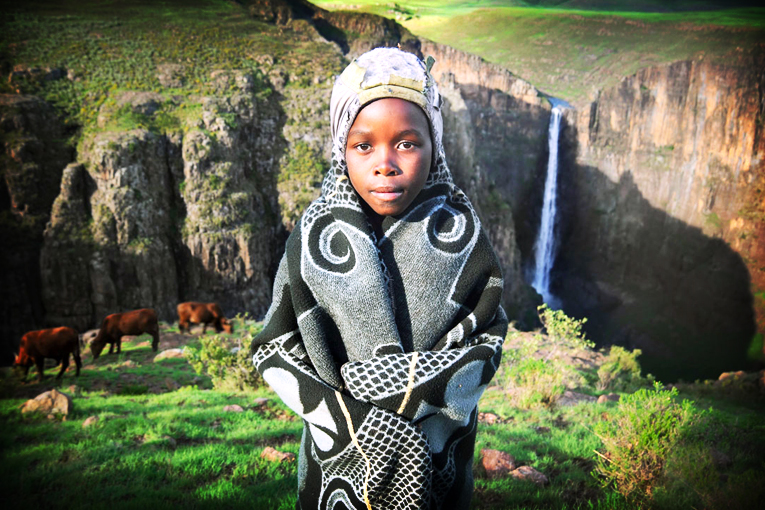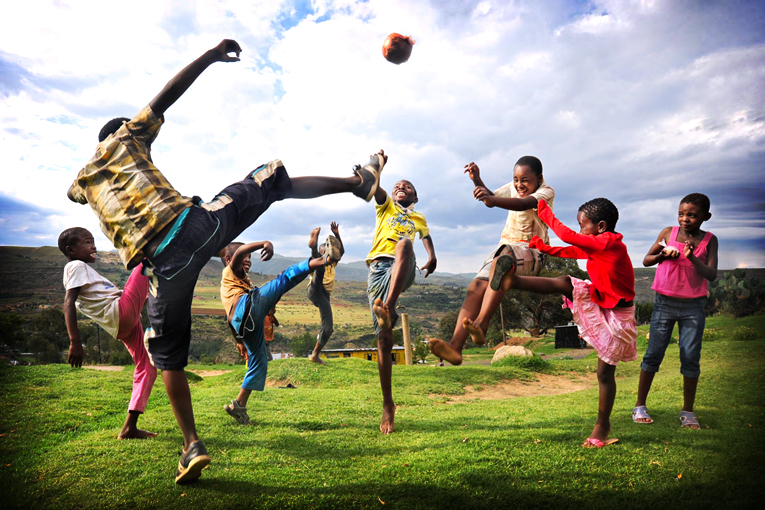Basutoland was renamed the Kingdom of Lesotho upon independence from the UK in 1966. The Basuto National Party ruled the country during its first two decades. King MOSHOESHOE was exiled in 1990, but returned to Lesotho in 1992 and was reinstated in 1995 and subsequently succeeded by his son, King LETSIE III, in 1996. Constitutional government was restored in 1993 after seven years of military rule. In 1998, violent protests and a military mutiny following a contentious election prompted a brief but bloody intervention by South African and Batswana military forces under the aegis of the Southern African Development Community. Subsequent constitutional reforms restored relative political stability.
Peaceful parliamentary elections were held in 2002, but the National Assembly elections of February 2007 were hotly contested and aggrieved parties disputed how the electoral law was applied to award proportional seats in the Assembly. In May 2012, competitive elections involving 18 parties saw Prime Minister Motsoahae Thomas THABANE form a coalition government – the first in the country’s history – that ousted the 14-year incumbent, Pakalitha MOSISILI, who peacefully transferred power the following month.
Small, mountainous, and completely landlocked by South Africa, Lesotho depends on a narrow economic base of textile manufacturing, agriculture, remittances, and regional customs revenue. About three-fourths of the people live in rural areas and engage in animal herding and subsistence agriculture, although Lesotho produces less than 20% of the nation’s demand for food. Rain-fed agriculture is vulnerable to weather and climate variability. Lesotho relies on South Africa for much of its economic activity; Lesotho imports 90% of the goods it consumes from South Africa, including most agricultural inputs. Households depend heavily on remittances from family members working in South Africa, in mines, on farms and as domestic workers, though mining employment has declined substantially since the 1990s.
Lesotho is a member of the Southern Africa Customs Union (SACU), and revenues from SACU accounted for roughly 44% of total government revenue in 2014. The South African Government also pays royalties for water transferred to South Africa from a dam and reservoir system in Lesotho. However, the government continues to strengthen its tax system to reduce dependency on customs duties and other transfers. Access to credit remains a problem for the private sector. The government maintains a large presence in the economy – government consumption accounted for 37% of GDP in 2014 and the government remains Lesotho’s largest employer.
Lesotho’s largest private employer is the textile and garment industry – approximately 36,000 Basotho, mainly women, work in factories producing garments for export to South Africa and the US. Diamond mining in Lesotho has grown in recent years and may contribute 8.5% to GDP by 2015, according to current forecasts.
GDP (purchasing power parity):
$5.589 billion (2014 est.)
$5.359 billion (2013 est.)
$5.07 billion (2012 est.)
note: data are in 2014 US dollars
* country comparison to the world: 173
GDP (official exchange rate):
$2.458 billion (2014 est.)
GDP – real growth rate:
4.3% (2014 est.)
5.7% (2013 est.)
6% (2012 est.)
* country comparison to the world: 65
GDP – per capita (PPP):
$2,900 (2014 est.)
$2,800 (2013 est.)
$2,700 (2012 est.)
note: data are in 2013 US dollars
* country comparison to the world: 192
Gross national saving:
34.9% of GDP (2014 est.)
32.6% of GDP (2013 est.)
31.2% of GDP (2012 est.)
* country comparison to the world: 16
GDP – composition, by end use:
household consumption: 84.4%
government consumption: 38.7%
investment in fixed capital: 38%
investment in inventories: -0.7%
exports of goods and services: 49.9%
imports of goods and services: -110.3%
(2014 est.)
GDP – composition, by sector of origin:
agriculture: 7.5%
industry: 35.7%
services: 56.9% (2014 est.)
Agriculture – products:
corn, wheat, pulses, sorghum, barley; livestock
Industries:
food, beverages, textiles, apparel assembly, handicrafts, construction, tourism
Industrial production growth rate:
3.3% (2014 est.)
* country comparison to the world: 88
Labor force:
894,400 (2014 est.)
* country comparison to the world: 149
Labor force – by occupation:
agriculture: 86%
industry and services: 14%
note: most of the resident population is engaged in subsistence agriculture; roughly 35% of the active male wage earners work in South Africa (2002 est.)
Unemployment rate:
28.1% (2014 est.)
25% (2008 est.)
* country comparison to the world: 179
Population below poverty line:
49% (1999)
Household income or consumption by percentage share:
lowest 10%: 1%
highest 10%: 39.4% (2003)
Distribution of family income – Gini index:
63.2 (1995)
56 (1986-87)
* country comparison to the world: 1
Budget:
revenues: $1.358 billion
expenditures: $1.406 billion (2014 est.)
Taxes and other revenues:
55.3% of GDP (2014 est.)
country comparison to the world: 7
Budget surplus (+) or deficit (-):
-1.9% of GDP (2014 est.)
* country comparison to the world: 78
Public debt:
NA
Fiscal year:
1 April – 31 March
Inflation rate (consumer prices):
6% (2014 est.)
4.9% (2013 est.)
Central bank discount rate:
9.36% (31 December 2012)
10% (31 December 2010)
* country comparison to the world: 25
Commercial bank prime lending rate:
10.2% (31 December 2014 est.)
9.92% (31 December 2013 est.)
* country comparison to the world: 82
Stock of narrow money:
$425.9 million (31 December 2014 est.)
$380.2 million (31 December 2013 est.)
* country comparison to the world: 167
Stock of broad money:
$942.6 million (31 December 2014 est.)
$825.7 million (31 December 2013 est.)
* country comparison to the world: 170
Stock of domestic credit:
$38.65 million (31 December 2014 est.)
$37.18 million (31 December 2013 est.)
* country comparison to the world: 180
Current account balance:
-$449.1 million (2014 est.)
-$228.3 million (2013 est.)
country comparison to the world: 103
Exports:
$824.9 million (2014 est.)
$814.6 million (2013 est.)
* country comparison to the world: 165
Exports – commodities:
manufactures (clothing, footwear), wool and mohair, food and live animals, electricity, water, diamonds
Imports:
$1.931 billion (2014 est.)
$1.78 billion (2013 est.)
* country comparison to the world: 167
Imports – commodities:
food; building materials, vehicles, machinery, medicines, petroleum products
Reserves of foreign exchange and gold:
$1.101 billion (31 December 2014 est.)
$1.055 billion (31 December 2013 est.)
* country comparison to the world: 132
Debt – external:
$929.5 million (31 December 2014 est.)
$916.8 million (31 December 2013 est.)
* country comparison to the world: 163
Stock of direct foreign investment – at home:
$909.1 million (31 December 2014 est.)
$635.7 million (31 December 2013 est.)
* country comparison to the world: 106
Exchange rates:
maloti (LSL) per US dollar –
10.6 (2014 est.)
9.64 (2013 est.)
8.2 (2012 est.)
7.26 (2011 est.)
7.32 (2010 est.)
Location:
Southern Africa, an enclave of South Africa
Geographic coordinates:
29 30 S, 28 30 E
Map references:
Africa
Area:
total: 30,355 sq km
land: 30,355 sq km
water: 0 sq km
* country comparison to the world: 142
Area – comparative:
slightly smaller than Maryland
Land boundaries:
total: 1,106 km
border countries (1): South Africa 1,106 km
Coastline:
0 km (landlocked)
Maritime claims:
none (landlocked)
Climate:
temperate; cool to cold, dry winters; hot, wet summers
Terrain:
mostly highland with plateaus, hills, and mountains
Elevation extremes:
lowest point: junction of the Orange and Makhaleng Rivers 1,400 m
highest point: Thabana Ntlenyana 3,482 m
Natural resources:
water, agricultural and grazing land, diamonds, sand, clay, building stone
Land use:
arable land: 9.27%
permanent crops: 0.13%
other: 90.6% (2012 est.)
Irrigated land:
26.37 sq km (2003)
Total renewable water resources:
3.02 cu km (2011)
Freshwater withdrawal (domestic/industrial/agricultural):
total: 0.04 cu km/yr (46%/46%/9%)
per capita: 21.79 cu m/yr (2000)
Natural hazards:
periodic droughts
Environment – current issues:
population pressure forcing settlement in marginal areas results in overgrazing, severe soil erosion, and soil exhaustion; desertification; Highlands Water Project controls, stores, and redirects water to South Africa
Environment – international agreements:
party to: Biodiversity, Climate Change, Climate Change-Kyoto Protocol, Desertification, Endangered Species, Hazardous Wastes, Law of the Sea, Marine Life Conservation, Ozone Layer Protection, Wetlands
signed, but not ratified: none of the selected agreements
Geography – note:
landlocked, completely surrounded by South Africa; mountainous, more than 80% of the country is 1,800 m above sea level
| Title | |||
|---|---|---|---|
| No Packages Found | |||
 | Mr. Thabo Tsasanyane | Senior Environment Officer | +266 22 311767 | |
 | Mr Mokitimi Thekiso | Environmental Health | +266 22 222 6402 | |
 | Ms. Tumisang Masoabi | Department of Environment | +266 22 311054 | |
 | Mrs Mmathato Rammoko | Principal Environment Officer Ed & Outreach | +26658856814 | |
 | Ms Moleboheng J. Petlane | Environment Officer, Pollution Control | +266 6343 2362 | |
 | Ms Mmakhiba Tjela | Chief Legal Officer | +266 5885 4686 |






